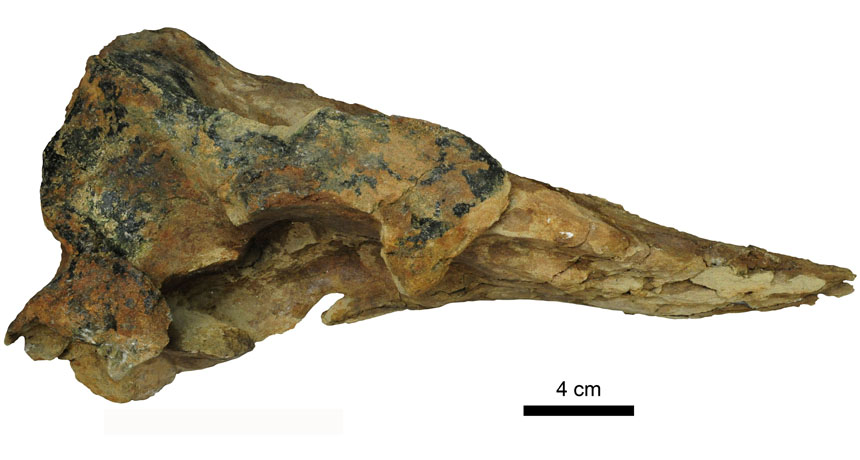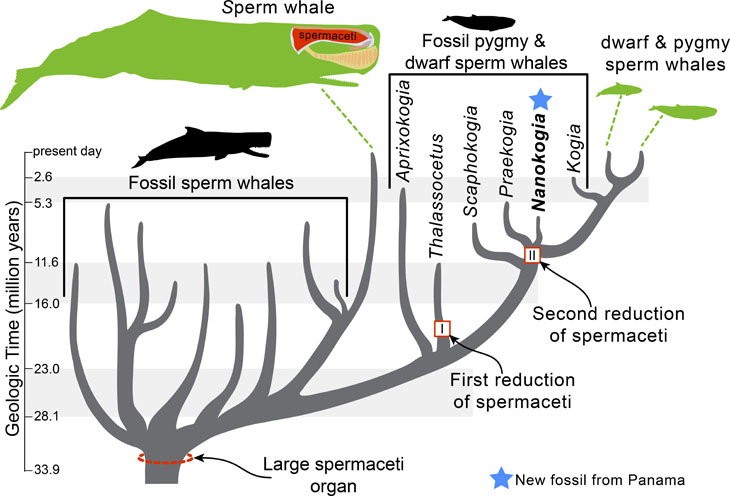Rare fossils expand evolutionary history of sperm whales

This skull belonged to an extinct species of pygmy sperm whale dubbed Nanokogia isthmia that once lived in an outer continental shelf habitat about 100 meters deep off the coast of Panama.
Velez-Juarbe et al. (CC-BY)






